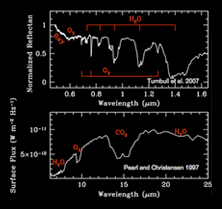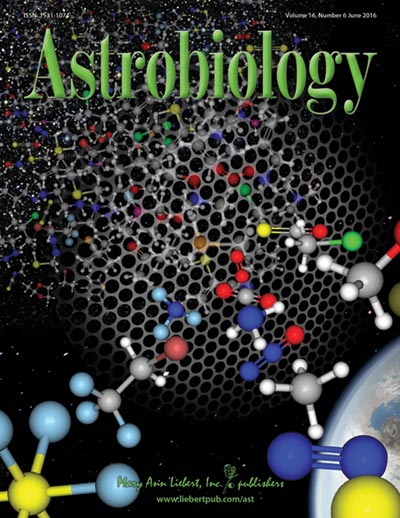 Exoplanet Biosignature Gases
Exoplanet Biosignature Gases
A biosignature gas is defined as one that is produced by life and accumulates in an atmosphere to detectable levels. Any kind of ab initio approach to predicting what biosignature gases might be is so challenging that nearly all work done to date basically follows the “We know what Earth life produces, so what might Earth s products look like if transplanted to another, slightly different, Earth-like planet” (Earth-like refers to a planet with about the same size and mass as Earth, with oceans and continents, a thin N2-CO2-O2 atmosphere, and a radiation environment similar to that of Earth’s. Gases studied in this context include oxygen, the otherwise unexplained simultaneous presence of gases out of thermodynamic equilibrium (specifically methane with oxygen), methyl halides, sulfur compounds, and some other gases.
Prof. Seager’s main exoplanet biosignature gas research aims to push the frontiers to consider biosignature gases on planets very different from Earth and also as many molecules as possible so we do not miss our chance to identify gases that might be produced by life.
 An excellent summary paper still relevant today summarizing Earth’s biosignatures (in which Prof. Seager played only a minor role)
An excellent summary paper still relevant today summarizing Earth’s biosignatures (in which Prof. Seager played only a minor role)
The first paper showing biosignature gases, if produced on rocky planets with hydrogen-rich atmospheres, could survive.
A theoretical experiment to investigate whether we can liberate predictive atmosphere models from requiring fixed, Earth-like biosignature gas source fluxes. New biosignature gases can be considered with a check that the biomass estimate is physically plausible. We have created a framework for linking biosignature gas detectability to biomass estimates, including atmospheric photochemistry and biological thermodynamics.
A novel approach to biosignature gases will start with a long list of potential biosignature gas molecules. To maximize our chances of recognizing biosignature gases, we promote the concept that all stable and potentially volatile molecules should initially be considered as viable biosignature gases. We present a new approach to the subject of biosignature gases by systematically constructing lists of volatile molecules in different categories. An exhaustive list up to six non-H atoms is presented, totaling about 14,000 molecules.
